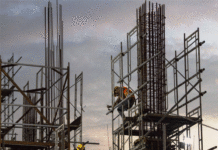By Anuj Puri, Chairman – ANAROCK Property Consultants
New Delhi, May 02, 2018: Ready Reckoner (RR) rates indicate the value of land or residential and commercial properties of an area determined by the state government and are published annually. RR rates vary as per the area under consideration and the available infrastructure facilities. They have an impact on the stamp duty on property transactions, and concurrently on the revenue mop-up of the state government. They also directly impact the market value of the properties. Change in the RR rates also influences the real estate construction cost and additional charges towards any transaction.
 Pune’s RR rates
Pune’s RR rates
The RR rates of Pune were proposed to be hiked by 3% this year, and the final announcement that they will remain unchanged comes as a major relief to Pune’s real estate industry. The proposed hike would have had a negative impact even though it was marginal compared to the previous years (the rates were increased by 13% in 2010, in 2011 by 27%, in 2012 by 17%, in 2013 by 12%, in 2014 by 13%, in 2015 by 15% and in 2016-17 by 7%). As per the governing authority, such hikes are based on detailed surveys undertaken by the town planning department. The rates were decided based on the number of sales and registrations in each zone.
Impact of RR Rates on Pune’s Real Estate Market
While the real estate sector is still recovering from the triple tsunami of Demo, RERA, GST, a hike in RR rates in Pune at this time would have hampered homebuyer sentiments. In the current affordable housing focused era with low interest rates on home loans and RERA being implemented, increased RR rates would be a hard blow to the Pune’s real estate sector.
Factors of benefit and loss should be considered before deciding the RR rates. In 2009-10, the RR rates were unchanged even when property prices declined. Similarly, during 2013-15, RR rates were hiked despite insignificant market appreciation. The Maharashtra Government recently hiked the RR rates, which may cause builders to increase their property prices even if doing so is untenable in the current market environment. A similar trend was observed in Delhi when the state government raised the circle rates by 20% last year. In the case of Karnataka, the guidance values remained unchanged due to a drop in the number of registrations post-DeMo.
As per Pune’s market scenario, property prices are likely to remain stable in the short-to-medium term. Demand and supply have both reduced in the city post-DeMo and RERA. Keeping the RR rates unchanged will be beneficial for the city’s real estate sector, benefit end-users and reduce the burden of tax payment on property transactions. It is desirable to make the ratable value sensitive to the present market environment and trends.
Increased RR rates are beneficial only when the market prices are high and the market is performing well in terms of sales. If the market prices are low and the RR rates are high, it will give rise to unfavourable conditions for both builders and buyers. Hence, considering the current macroeconomic scenario, it is ideal to keep the RR rates unchanged until the market recovers and regains its momentum.
Corporate Comm India(CCI Newswire)




















